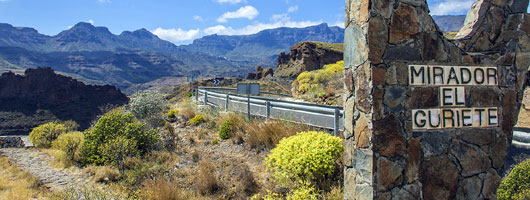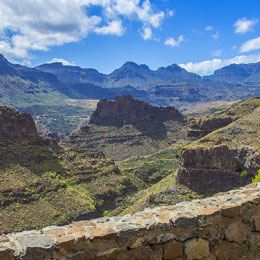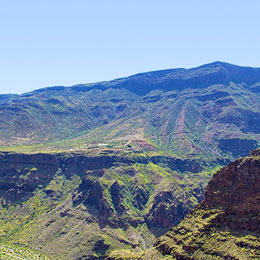From our viewpoint here at the Barranco de Tirajana we can make out the fortress of Ansite. In modern times this has been related to the final battle ground for the conquest of the island of Gran Canaria. Ansite was the site where a group of Canarians took refuge prior to surrendering to the military powers of Pedro de Vera on 29th April 1483, the date on which Gran Canaria was incorporated into the Castilian Crown. As a result of events here, every 29th April celebrations have been held here to commemorate the symbolic significance of the fusion of the two peoples, although rather than a fusion, it really signaled the takeover of the defeated islanders.

The fortresses constitute an important archaeological settlement, with a multitude of funeral caves and living quarters. The nearby Museo Castillo de La Fortaleza El Hao de Santa Lucía, is the ideal place to go to find out more about the pre Hispanic dwellers of the area.
The countryside all around is harsh and steep, with a ravine locked in between two hilly escarpments. On the one side we have the Guriete and Los Cuchillos, and on the other, to the south, is the macizo de Amurga. A green oasis is provided by the palm groves, which make up the original vegetation here. This very vegetation growing down the hillsides has been shaped by the intense flocks of goats which for centuries and since pre Hispanic times, have grazed on the land.


French anthropologist René Verneau was a regular visitor to Gran Canaria between the end of the 19th century and the beginning of the 20th, and he refers to: “...two enormous basalt massifs, joined at their base, called Fortaleza Grande and Fortaleza Chica. These two mountains have completely vertical walls, are isolated from two ravines which make them look even taller than they actually are. They are full of caves which used to be inhabited, and at the summit of the bigger one we can still make out two sacrificial altars. I explored most of these caves and they provided us with all sorts of interesting objects”.
The area to the west of the Barranco de Tirajana, except for its narrow coastal strip, forms part of the World Biosphere Reserve of Gran Canaria, as declared by UNESCO on 29th Junio 2005.
